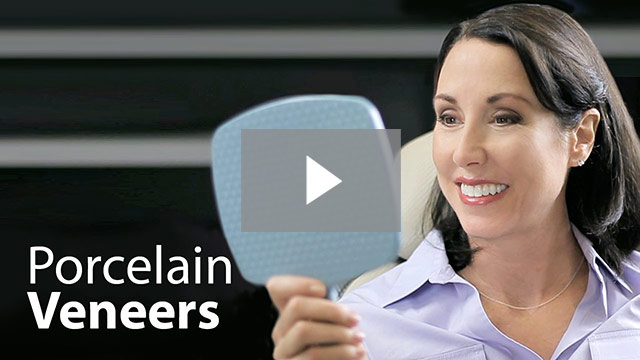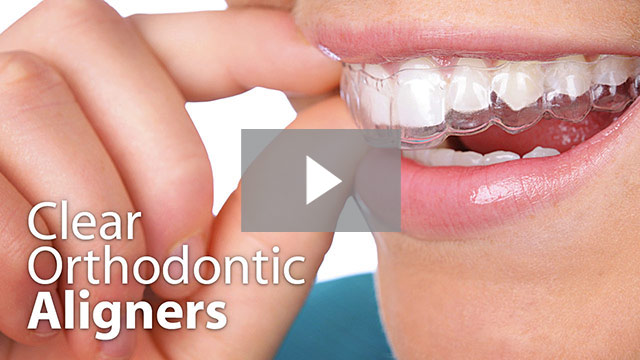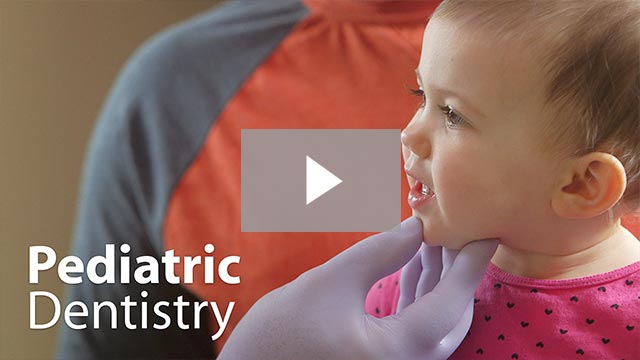[et_pb_section fb_built=”1″ specialty=”on” _builder_version=”3.22″ custom_padding=”||0px” top_divider_style=”wave” top_divider_color=”#f7f9fb” top_divider_height=”500px” top_divider_repeat_last_edited=”off|desktop” bottom_divider_style=”wave” bottom_divider_color=”#f7f9fb” bottom_divider_height=”500px” bottom_divider_flip=”vertical”][et_pb_column type=”3_4″ specialty_columns=”3″ _builder_version=”3.25″ custom_padding=”|||” parallax__hover=”off” parallax_method__hover=”on” custom_padding__hover=”|||”][et_pb_row_inner _builder_version=”3.25″ custom_padding=”||||false|false”][et_pb_column_inner saved_specialty_column_type=”3_4″ _builder_version=”3.25″ custom_padding=”|||” parallax__hover=”off” parallax_method__hover=”on” custom_padding__hover=”|||”][et_pb_text _builder_version=”4.5.1″ text_font=”||||||||” text_text_color=”#867b6f” text_line_height=”1.8em” header_font=”|700|||||||” header_text_color=”#3fb0d8″ header_font_size=”45px” header_2_font=”||||||||” header_2_text_color=”#f92c8b” text_font_size_tablet=”” text_font_size_phone=”16px” text_font_size_last_edited=”on|desktop”]
Dental Inlays and Onlays
Inlays and onlays can be used as a replacement for traditional dental fillings to treat teeth. As opposed to fillings, inlays and onlays are fabricated in a lab and then fitted to the tooth.
Inlays are a type of a laboratory-processed restoration placed in a tooth when the cavity is still within the confines of the tooth, while onlays are placed when some parts or the whole chewing surface of the tooth needs to be replaced.
Since inlays and onlays are laboratory-processed, they are imparted with wear-resistant and stain-resistant properties. Inlays and onlays can also be matched with the tooth’s natural color and can be produced with very intricate details such as grooves and special tinting. They can be made of porcelain or zirconia which look aesthetically pleasing and of metal if the location of the restoration is hidden and if the patient is willing.
[/et_pb_text][/et_pb_column_inner][/et_pb_row_inner][et_pb_row_inner _builder_version=”3.25″ custom_padding=”||||false|false”][et_pb_column_inner saved_specialty_column_type=”3_4″ _builder_version=”3.25″ custom_padding=”|||” parallax__hover=”off” parallax_method__hover=”on” custom_padding__hover=”|||”][et_pb_text _builder_version=”4.5.1″ text_font=”||||||||” text_font_size=”16px” text_line_height=”1.8em” ul_font_size=”13px” header_font=”||||||||” header_text_color=”#3fb0d8″ header_font_size=”35px” header_2_font=”||||||||” header_2_text_color=”#f92c8b” text_font_size_tablet=”” text_font_size_phone=”16px” text_font_size_last_edited=”on|desktop”]
Advantages
- Not likely to discolor over time compared to tooth-colored resin fillings
- Preserve as much healthy tooth as possible and work as an excellent alternative to a crown when the damaged area is minimal
- An inlay is custom-made according to the preparation tooth by the dentist in comparison with a composite filling it shrinks in time, and leaks can occur.
- Dental inlays are better at sealing teeth to keep out bacteria, therefore they are preferred when the cavity is in between teeth
Disadvantages
- More costly than amalgam or composite fillings
- The procedure is carried with two appointments instead of one visit
- It is also prone to fracture
[/et_pb_text][/et_pb_column_inner][/et_pb_row_inner][et_pb_row_inner _builder_version=”3.25″ custom_padding=”0|0px|27.7813px|0px|false|false”][et_pb_column_inner saved_specialty_column_type=”3_4″ _builder_version=”3.25″ custom_padding=”|||” parallax__hover=”off” parallax_method__hover=”on” custom_padding__hover=”|||”][et_pb_text _builder_version=”4.5.1″ text_font=”||||||||” text_text_color=”#867b6f” text_line_height=”1.8em” header_font=”||||||||” header_text_color=”#3fb0d8″ header_font_size=”35px” header_2_font=”||||||||” header_2_text_color=”#f92c8b” text_font_size_tablet=”” text_font_size_phone=”16px” text_font_size_last_edited=”on|desktop”]
Type and kinds
While there are several types of inlays and onlays, gold is the best option but is usually placed in areas of the mouth that are not visible.
Porcelain, ceramic and resin are the kinds that dentists usually use for the front teeth.
[/et_pb_text][/et_pb_column_inner][/et_pb_row_inner][et_pb_row_inner _builder_version=”3.25″ custom_padding=”||||false|false”][et_pb_column_inner saved_specialty_column_type=”3_4″ _builder_version=”3.25″ custom_padding=”|||” parallax__hover=”off” parallax_method__hover=”on” custom_padding__hover=”|||”][et_pb_text _builder_version=”4.5.1″ text_font=”||||||||” text_text_color=”#867b6f” text_line_height=”1.8em” header_font=”||||||||” header_text_color=”#3fb0d8″ header_font_size=”35px” header_2_font=”||||||||” header_2_text_color=”#f92c8b” text_font_size_tablet=”” text_font_size_phone=”16px” text_font_size_last_edited=”on|desktop”]
Procedure
Inlays and onlays require time for restoration. Usually, it needs two to three dental office visits to finish the whole treatment.
During the first appointment, discussion, planning, removal of the decay, preparation of the tooth and impression of the prepared cavity are done. A temporary inlay or onlay will be placed to last until the next appointment. Subsequently, the impression of the cavity will be sent to the laboratory to be processed.
For the second appointment, the shade and fit of the permanent inlay and onlay in the cavity are checked. If the patient and the dentist consider it as acceptable and no further adjustment needs to be done, the inlay or onlay is finally cemented into the tooth.
The last appointment is scheduled for one – two days after cementation of the restoration and it is done to assess the restoration according to the patient’s feedback as well as to reinforce good oral hygiene. These dental restorations should receive the same meticulous care as your natural teeth to ensure the longevity of the inlay and onlay inside the mouth and to maintain good oral and general health.
[/et_pb_text][/et_pb_column_inner][/et_pb_row_inner][et_pb_row_inner _builder_version=”3.25″][et_pb_column_inner saved_specialty_column_type=”3_4″ _builder_version=”3.25″ custom_padding=”|||” parallax__hover=”off” parallax_method__hover=”on” custom_padding__hover=”|||”][et_pb_text _builder_version=”4.5.1″ text_font=”||||||||” text_font_size=”16px” text_line_height=”1.8em” ul_font=”||||||||” ul_font_size=”13px” ul_line_height=”1.8em” header_font=”||||||||” header_text_color=”#3fb0d8″ header_font_size=”35px” header_2_font=”||||||||” header_2_text_color=”#f92c8b” text_font_size_tablet=”” text_font_size_phone=”16px” text_font_size_last_edited=”on|desktop”]
Post Treatment
- Tooth sensitivity with hot and cold sometimes maybe expected, however, it will lessen as the tooth gets used to the restoration.
- Practice proper oral hygiene by brushing and flossing
- Visit to the dentist every 6 months to check if there are fractures or leaks
[/et_pb_text][/et_pb_column_inner][/et_pb_row_inner][/et_pb_column][et_pb_column type=”1_4″ _builder_version=”3.25″ custom_padding=”|||” parallax__hover=”off” parallax_method__hover=”on” custom_padding__hover=”|||”][et_pb_text _builder_version=”3.18.9″ text_font=”||||||||” header_font=”||||||||” header_text_align=”left” header_text_color=”#f92c8b” header_2_font=”||||||||” header_2_text_color=”#f92c8b” header_2_font_size=”16px” header_2_line_height=”1.8em” max_width=”100%” global_module=”37744″]
[/et_pb_text][et_pb_text disabled_on=”off|off|off” module_class=”link-hover” _builder_version=”3.18.9″ text_font=”||||||||” link_font=”||||||||” link_text_color=”#3fb0d8″ link_font_size=”16px” link_line_height=”1.8em” ul_font=”||||||||” header_font=”||||||||” header_text_align=”left” header_text_color=”#f92c8b” header_3_font=”||||||||” header_3_text_align=”left” header_3_text_color=”#f92c8b” header_3_font_size=”30px” max_width=”100%” max_width_tablet=”” max_width_phone=”100%” max_width_last_edited=”on|phone” global_module=”36563″ saved_tabs=”all” custom_css_main_element__hover_enabled=”on”]
Clinics
[/et_pb_text][et_pb_accordion _builder_version=”4.5.1″ toggle_font=”||||||||” body_font=”||||||||” body_font_size=”12px” body_line_height=”1.4em” max_width=”100%” global_module=”41168″][et_pb_accordion_item title=”Makati” _builder_version=”3.18.9″ max_width=”100%” open=”on”]
2F, Plaza One Hundred, 100 V.A. Rufino St., Legaspi Village, Makati City
(02) 8823-5571
(+63) 917-584-6852
makati@affinitydentalclinics.com
[/et_pb_accordion_item][et_pb_accordion_item title=”BGC” _builder_version=”3.18.9″ max_width=”100%” open=”off”]
[/et_pb_accordion_item][et_pb_accordion_item title=”Alabang” _builder_version=”3.18.9″ max_width=”100%” open=”off”]
[/et_pb_accordion_item][et_pb_accordion_item title=”Cebu” _builder_version=”4.5.1″ max_width=”100%” open=”off”]
[/et_pb_accordion_item][et_pb_accordion_item title=”Ortigas” open=”off” _builder_version=”4.5.1″ max_width=”100%”]
(+63) 917-632-1128
[/et_pb_accordion_item][/et_pb_accordion][/et_pb_column][/et_pb_section][et_pb_section fb_built=”1″ _builder_version=”3.22″ custom_padding=”0||0||true|false” top_divider_style=”wave” top_divider_color=”#f7f9fb” top_divider_height=”500px” top_divider_flip=”horizontal” bottom_divider_color=”#f7f9fb” bottom_divider_height=”500px”][et_pb_row _builder_version=”3.25″][et_pb_column type=”4_4″ _builder_version=”3.25″ custom_padding=”|||” custom_padding__hover=”|||”][et_pb_text _builder_version=”3.27.4″ text_font=”||||||||” header_font=”||||||||” header_text_align=”center” header_text_color=”#3fb0d8″ header_font_size=”35px” header_2_font=”|700|||||||” header_2_text_align=”center” header_2_text_color=”#f92c8b” header_2_font_size=”60px”]
Top Dental Procedures
Love Your Teeth
[/et_pb_text][/et_pb_column][/et_pb_row][et_pb_row column_structure=”1_4,1_4,1_4,1_4″ disabled_on=”on|off|off” _builder_version=”3.25″][et_pb_column type=”1_4″ _builder_version=”3.25″ custom_padding=”|||” custom_padding__hover=”|||”][et_pb_text _builder_version=”3.27.4″]
[/et_pb_text][/et_pb_column][et_pb_column type=”1_4″ _builder_version=”3.25″ custom_padding=”|||” custom_padding__hover=”|||”][et_pb_text _builder_version=”3.27.4″]
[/et_pb_text][/et_pb_column][et_pb_column type=”1_4″ _builder_version=”3.25″ custom_padding=”|||” custom_padding__hover=”|||”][et_pb_text _builder_version=”3.27.4″]
[/et_pb_text][/et_pb_column][et_pb_column type=”1_4″ _builder_version=”3.25″ custom_padding=”|||” custom_padding__hover=”|||”][et_pb_text _builder_version=”3.27.4″]
[/et_pb_text][/et_pb_column][/et_pb_row][et_pb_row column_structure=”1_3,1_3,1_3″ disabled_on=”off|on|on” _builder_version=”3.25″][et_pb_column type=”1_3″ _builder_version=”3.25″ custom_padding=”|||” custom_padding__hover=”|||”][et_pb_text _builder_version=”3.27.4″ text_font=”||||||||” text_orientation=”center”]
[/et_pb_text][/et_pb_column][et_pb_column type=”1_3″ _builder_version=”3.25″ custom_padding=”|||” custom_padding__hover=”|||”][et_pb_text _builder_version=”3.27.4″ text_font=”||||||||” text_orientation=”center”]
[/et_pb_text][/et_pb_column][et_pb_column type=”1_3″ _builder_version=”3.25″ custom_padding=”|||” custom_padding__hover=”|||”][et_pb_text _builder_version=”3.27.4″ text_font=”||||||||” text_orientation=”center”]
[/et_pb_text][/et_pb_column][/et_pb_row][et_pb_row column_structure=”1_4,1_4,1_4,1_4″ disabled_on=”on|on|off” _builder_version=”3.25″][et_pb_column type=”1_4″ _builder_version=”3.25″ custom_padding=”|||” custom_padding__hover=”|||”][et_pb_text _builder_version=”3.27.4″]
[/et_pb_text][/et_pb_column][et_pb_column type=”1_4″ _builder_version=”3.25″ custom_padding=”|||” custom_padding__hover=”|||”][et_pb_text _builder_version=”3.27.4″]
[/et_pb_text][/et_pb_column][et_pb_column type=”1_4″ _builder_version=”3.25″ custom_padding=”|||” custom_padding__hover=”|||”][et_pb_text _builder_version=”3.27.4″]
[/et_pb_text][/et_pb_column][et_pb_column type=”1_4″ _builder_version=”3.25″ custom_padding=”|||” custom_padding__hover=”|||”][et_pb_text _builder_version=”3.27.4″]
[/et_pb_text][/et_pb_column][/et_pb_row][et_pb_row _builder_version=”3.25″][et_pb_column type=”4_4″ _builder_version=”3.25″ custom_padding=”|||” custom_padding__hover=”|||”][et_pb_button button_text=”More Videos” button_alignment=”center” _builder_version=”3.16″ custom_button=”on” button_text_color=”#ffffff” button_bg_color=”#f92c8b” button_border_color=”rgba(0,0,0,0)” button_font=”||||||||” button_use_icon=”off” animation_style=”bounce” hover_transition_speed_curve=”ease-in-out” box_shadow_style=”preset5″ box_shadow_vertical=”4px” box_shadow_spread=”0px” button_border_color_hover=”rgba(0,0,0,0)” button_bg_color_hover=”#2cc2e6″ button_text_size__hover_enabled=”off” button_one_text_size__hover_enabled=”off” button_two_text_size__hover_enabled=”off” button_text_color__hover_enabled=”off” button_one_text_color__hover_enabled=”off” button_two_text_color__hover_enabled=”off” button_border_width__hover_enabled=”off” button_one_border_width__hover_enabled=”off” button_two_border_width__hover_enabled=”off” button_border_color__hover_enabled=”on” button_border_color__hover=”rgba(0,0,0,0)” button_one_border_color__hover_enabled=”off” button_two_border_color__hover_enabled=”off” button_border_radius__hover_enabled=”off” button_one_border_radius__hover_enabled=”off” button_two_border_radius__hover_enabled=”off” button_letter_spacing__hover_enabled=”off” button_one_letter_spacing__hover_enabled=”off” button_two_letter_spacing__hover_enabled=”off” button_bg_color__hover_enabled=”on” button_bg_color__hover=”#2cc2e6″ button_one_bg_color__hover_enabled=”off” button_two_bg_color__hover_enabled=”off” filter_saturate__hover_enabled=”on” filter_saturate__hover=”100%” custom_css_main_element__hover_enabled=”on” custom_css_after__hover_enabled=”on” custom_css_after__hover=”-webkit-box-shadow: -1px -2px 22px 7px rgba(0,0,0,0.75);||-moz-box-shadow: -1px -2px 22px 7px rgba(0,0,0,0.75);||box-shadow: -1px -2px 22px 7px rgba(0,0,0,0.75);” box_shadow_color__hover=”rgba(0,0,0,0.3)” box_shadow_color__hover_enabled=”on” box_shadow_vertical__hover_enabled=”on”][/et_pb_button][/et_pb_column][/et_pb_row][/et_pb_section][et_pb_section fb_built=”1″ _builder_version=”3.6″ background_color=”#321470″ use_background_color_gradient=”on” background_color_gradient_start=”#6527a3″ background_color_gradient_end=”#321470″ custom_margin=”0px||0px|” custom_padding=”0px||0px|” global_module=”37147″ saved_tabs=”all” locked=”off”][et_pb_row _builder_version=”3.25″ background_size=”initial” background_position=”top_left” background_repeat=”repeat” custom_padding=”0|0px|30px|0px|false|false”][et_pb_column type=”4_4″ _builder_version=”3.25″ custom_padding=”|||” custom_padding__hover=”|||”][et_pb_image src=”https://affinitydentalclinics.com/wp-content/uploads/ADbdo-logo2-1.png” align=”center” align_tablet=”center” align_last_edited=”on|desktop” _builder_version=”3.23″ max_width_tablet=”” max_width_phone=”100%” max_width_last_edited=”on|phone” module_alignment=”center” custom_padding=”0px||”][/et_pb_image][et_pb_text _builder_version=”3.27.4″ text_text_color=”#ffffff” header_text_color=”#ffffff” header_3_text_align=”left” header_3_text_color=”#ffffff”]
Follow us on Social Media
[/et_pb_text][et_pb_social_media_follow _builder_version=”3.17.6″][et_pb_social_media_follow_network social_network=”facebook” url=”https://www.facebook.com/affinitydental.ph” _builder_version=”3.6″ background_color=”#3b5998″ follow_button=”off” url_new_window=”on”] Facebook [/et_pb_social_media_follow_network][et_pb_social_media_follow_network social_network=”instagram” url=”https://www.instagram.com/affinitydentalclinics/” _builder_version=”3.6″ background_color=”#ea2c59″ follow_button=”off” url_new_window=”on”] Instagram [/et_pb_social_media_follow_network][et_pb_social_media_follow_network social_network=”youtube” url=”https://www.youtube.com/user/AffinityDentalPh/featured” _builder_version=”3.6″ background_color=”#a82400″ follow_button=”off” url_new_window=”on”] Youtube [/et_pb_social_media_follow_network][/et_pb_social_media_follow][/et_pb_column][/et_pb_row][/et_pb_section][et_pb_section fb_built=”1″ prev_background_color=”#321470″ _builder_version=”3.6″ use_background_color_gradient=”on” background_color_gradient_start=”#233caf” background_color_gradient_end=”#2b1e91″ custom_margin=”0px|||” custom_padding=”0px||10px|” top_divider_style=”wave2″ top_divider_height=”200px” global_module=”37149″ saved_tabs=”all” locked=”off”][et_pb_row column_structure=”1_4,1_4,1_4,1_4″ _builder_version=”3.25″][et_pb_column type=”1_4″ _builder_version=”3.25″ custom_padding=”|||” custom_padding__hover=”|||”][et_pb_text ul_type=”none” ul_item_indent=”10px” _builder_version=”3.27.4″ link_font=”||||||||” link_text_color=”#ffffff” link_font_size=”16px” link_line_height=”1.8em” ul_font=”|300|||||||” ul_text_color=”#ffffff” ul_font_size=”16px” ul_line_height=”1.8em” header_font=”||||||||” header_text_color=”#ffffff”]
About
[/et_pb_text][/et_pb_column][et_pb_column type=”1_4″ _builder_version=”3.25″ custom_padding=”|||” custom_padding__hover=”|||”][et_pb_text ul_type=”none” ul_item_indent=”10px” _builder_version=”3.27.4″ link_font=”||||||||” link_text_color=”#ffffff” link_font_size=”16px” link_line_height=”1.8em” ul_font=”|300|||||||” ul_text_color=”#ffffff” ul_font_size=”16px” ul_line_height=”1.8em” header_font=”||||||||” header_text_color=”#ffffff”]
Clinics
[/et_pb_text][/et_pb_column][et_pb_column type=”1_4″ _builder_version=”3.25″ custom_padding=”|||” custom_padding__hover=”|||”][et_pb_text ul_type=”none” ul_item_indent=”10px” _builder_version=”4.5.1″ link_font=”||||||||” link_text_color=”#ffffff” link_font_size=”16px” link_line_height=”1.8em” ul_font=”|300|||||||” ul_text_color=”#ffffff” ul_font_size=”16px” ul_line_height=”1.8em” header_font=”||||||||” header_text_color=”#ffffff”]
Services
- General Dentistry
- Pediatric Dentistry
- Cosmetic Dentistry
- Orthodontics
- Periodontics
- Prosthodontics
- Oral Surgery
- Root Canal
- Dental Laboratory
- Digital X-Rays
[/et_pb_text][/et_pb_column][et_pb_column type=”1_4″ _builder_version=”3.25″ custom_padding=”|||” custom_padding__hover=”|||”][et_pb_text ul_type=”none” ul_item_indent=”10px” _builder_version=”3.27.4″ text_font=”||||||||” text_text_color=”#ffffff” link_font=”||||||||” link_text_color=”#ffffff” link_font_size=”16px” link_line_height=”1.8em” ul_font=”|300|||||||” ul_text_color=”#ffffff” ul_font_size=”16px” ul_line_height=”1.8em” header_font=”||||||||” header_text_color=”#ffffff”]
Terms and Conditions
Affinity Dental is a registered trademark of Affinity Health & Wellness Corporation.
[/et_pb_text][/et_pb_column][/et_pb_row][et_pb_row _builder_version=”3.25″ custom_margin=”||0px|” custom_padding=”||0px|”][et_pb_column type=”4_4″ _builder_version=”3.25″ custom_padding=”|||” custom_padding__hover=”|||”][et_pb_text _builder_version=”3.27.4″ text_orientation=”center”]
Copyright 2018, Affinity Dental Clinics. All Rights Reserved.
[/et_pb_text][/et_pb_column][/et_pb_row][/et_pb_section]